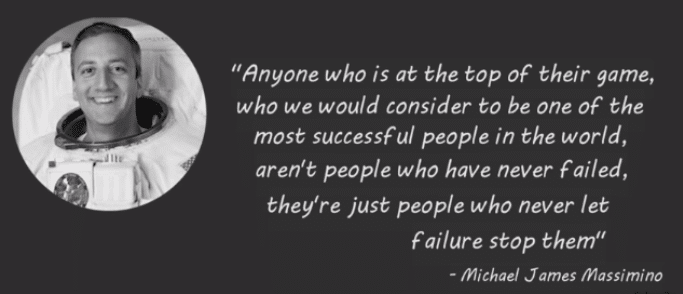What Can a Teacher Learn from a Hedge Fund Manager about Self Reflection?
There’s been a lot of talk lately about the importance of teacher self-reflection as a crucial professional development tool. While many educational gurus have helpful advice on how to reflect on your teaching, we thought a more aggressive approach might bring a fresh perspective to the bravest among you. Keep reading to learn how to apply a principled approach to teacher self-reflection to tackle big challenges and achieve major results.
In his book, Principles, billionaire hedge fund manager Ray Dalio talks about how he confronts failure in his life. Dalio claims that painful situations are often a trigger that we’ve hit on a key issue that prevents us from achieving success. Pain can manifest itself as regret, anger, guilt, or shame. Those emotional triggers, according to Dalio, can be a crucial moment. By choosing to respond to these feelings reflectively, and trying to extract principles that can guide our future actions, we will be able to achieve future success.
Here’s a short video summary of the book from Nathan Lozeron of the Productivity Game.
Dalio presents a simple equation for this process:
Pain + Reflection = Progress
The following three maxims can guide you through this equation and help you find a way to aggressively reflect on your teaching in order to improve the odds that all students will learn from you.
Step 1 — Be radically Open-Minded :
“If you can recognize that you have blind spots and open‐mindedly consider the possibility that others might see something better than you—and that the threats and opportunities they are trying to point out really exist— you are more likely to make good decisions.” – Ray Dalio
It can be hard to genuinely want to hear people’s honest opinions of you. But being radically open-minded leads us to more powerful self-reflection. Your self-reflection can be driven by questions like “What am I missing?” or “How can I improve?” without being self-critical. By being radically open-minded, we frame past errors and weaknesses as an opportunity to learn and grow in the future.
In Nathan’s words, “You seek the truth no matter how much it might hurt.”
Instead of letting anger and shame take control when you hear criticism from others, ask the question “Is there some truth to that?” By being radically-open minded, we avoid the common pitfall of deflecting and avoiding the criticism of others, and learn to embrace each disparagement as an opportunity to learn.
We often encourage our students to take this growth-mindset approach to their own learning. How often do we turn that same mindset inward? Do you openly and frequently seek feedback from other educators on your lesson plans, assignments, and teaching? Do you present a video of a lesson to a fellow-teacher and ask…
“What am I missing?”
“How can I improve?”
And what about students? When was the last time your exit ticket asked, “How could I have improved your learning experience today?”
By making our teaching public, and taking a radically open-minded view to the comments of others, we set ourselves up for the types of frank conversations that can get to the heart of our next opportunities to improve.

Step 2 — Find the Root Cause:
“Distinguish proximate causes from root causes. Proximate causes are typically the actions (or lack of actions) that lead to problems, so they are described with verbs (I missed the train because I didn’t check the train schedule). Root causes run much deeper and they are typically described with adjectives (I didn’t check the train schedule because I am forgetful).” – Ray Dalio
Often, when we examine our flaws, we tend to blame external factors. Lozeron uses the example of his chronic lateness in the video summary of Dalio’s book. It’s easy to fault traffic when you show up late to an event, but when it happens time and again, asking yourself the question, “what about myself is causing my tardiness?” can force you to examine some harder truths.
The harsh truth: Our personal weaknesses are often at the root of our shortcomings in life. Blaming external factors is one way of coping with that weakness. But identifying and confronting the root causes of a failure or missed opportunity gives us an opportunity to change in the future.
Examining the behaviors or mindsets inside ourselves that cause our weaknesses and failures can be difficult. But it can also give us a chance to fix them, like the leaky pipe Nathan referenced in the video.
Here are three ways Dalio suggests to find solutions instead of scapegoats.
- Find a workaround, like a bucket under the leaky pipe. Workarounds can help mitigate the consequences of our weakness. This is a good short-term solution for difficult to solve problems. While it might not address the root-cause of the problem up front, it can buy you some time while you find a more permanent solution.
- Learn a new skill, like pipe replacement. New skills can permanently solve persistent problems. This is often the best, and hardest, solution to these “root cause” weaknesses. Seeing a flaw as a chance to learn something new can be an exciting opportunity (if you choose to see it that way). Certainly, it can be challenging to learn something new, and often takes time and practice (and maybe a little additional harsh feedback from others). But the chance to put an end to a foiblefor good certainly seems like a worthy outcome.
- Find the right people. Let’s face it. There are some problems that are just too hard to solve on our own. Often, we choose to just ignore those really big shortcomings. But ignoring a leaky pipe isn’t going to solve anything. You may not have the desire or time to learn to be a master plumber. But you can use the resources around you to hire a plumber to solve the problem for you. Sometimes, the most astute solution is to build a team of people and use external tools to do the heavy lifting, and look for an opportunity to catch the problem in the future.
Dalio points out that most of us choose a fourth solution in these difficult situations: we run away from a challenging situation and change our goals. While that solution may bring an end to the situation immediately, it doesn’t provide us with the skills or support to address these big problems when they come up again.
Consider a teacher who struggles to keep students engaged. After reviewing video of the classroom, her mentor points out that she always calls on the same handful of students when asking questions. At this point, the teacher can choose to blame the disengaged students who, “won’t know the answer to the question anyway.” By not questioning disengaged students, she can comfortably confirm that she engaged some students, and that the fault lies with the students who “weren’t paying attention.”
But the teacher focused on finding the root cause might acknowledge that she simply doesn’t want to confront the fact that she hasn’t found a way to clearly communicate a concept so that all students can understand it. Perhaps she’s not accounting for the life experiences or prior knowledge a student would need in order to understand the material she’s trying to teach. By confronting her own shortcomings, she will be open to learning new skills to help her reach disengaged students and confidently ask them to participate in class. Or perhaps she can build a team to support her by asking students to tutor one another, talking to friends and colleagues who have succeeded with his students, and talking to students about why they aren’t more interested in class.
Of course, the teacher could also just run away from the problem and change her goals. She can choose to consider this as a classroom management problem and find systems and routines to force kids into appearing engaged (ever heard of SLANT?). But that won’t address the real problem or provide her with the skills and support to confront it head on when it comes back in the future. And we all know it will.
Step 3 — Write your Principles Down:
Taking time to write your principles down gives you the chance to revise and clarify your new learning. It also gives you a chance to share your new principles with others to confirm that you’ve got a clear system in place. After all, the point of these three steps is to make sure you’re ready to use your principles to address future problems. By writing them down, you can refer to them over and over when you face new bumps in the road. This is how Ray Dalio has built a set of principles that he uses to push himself to constantly improve. Dalio credits this principled lifestyle as a key element to his financial success. While teachers might not be motivated by the same outcomes as a hedge fund manager, we all want to be wildly successful, don’t we?

Here’s the gist of Dalio’s advice: learn to see pain as a signal that it’s time to reflect. That chance to develop and apply a principled approach to difficult situations is a great way to look at life as a continuous opportunity to grow and adapt. Rather than shying away from the pain of past failure, look for an opportunity to prevent failure in the future by being radically open-minded, reflecting on root causes, and developing a set of written principles that can guide you as you pursue learning for yourself…and your students.

